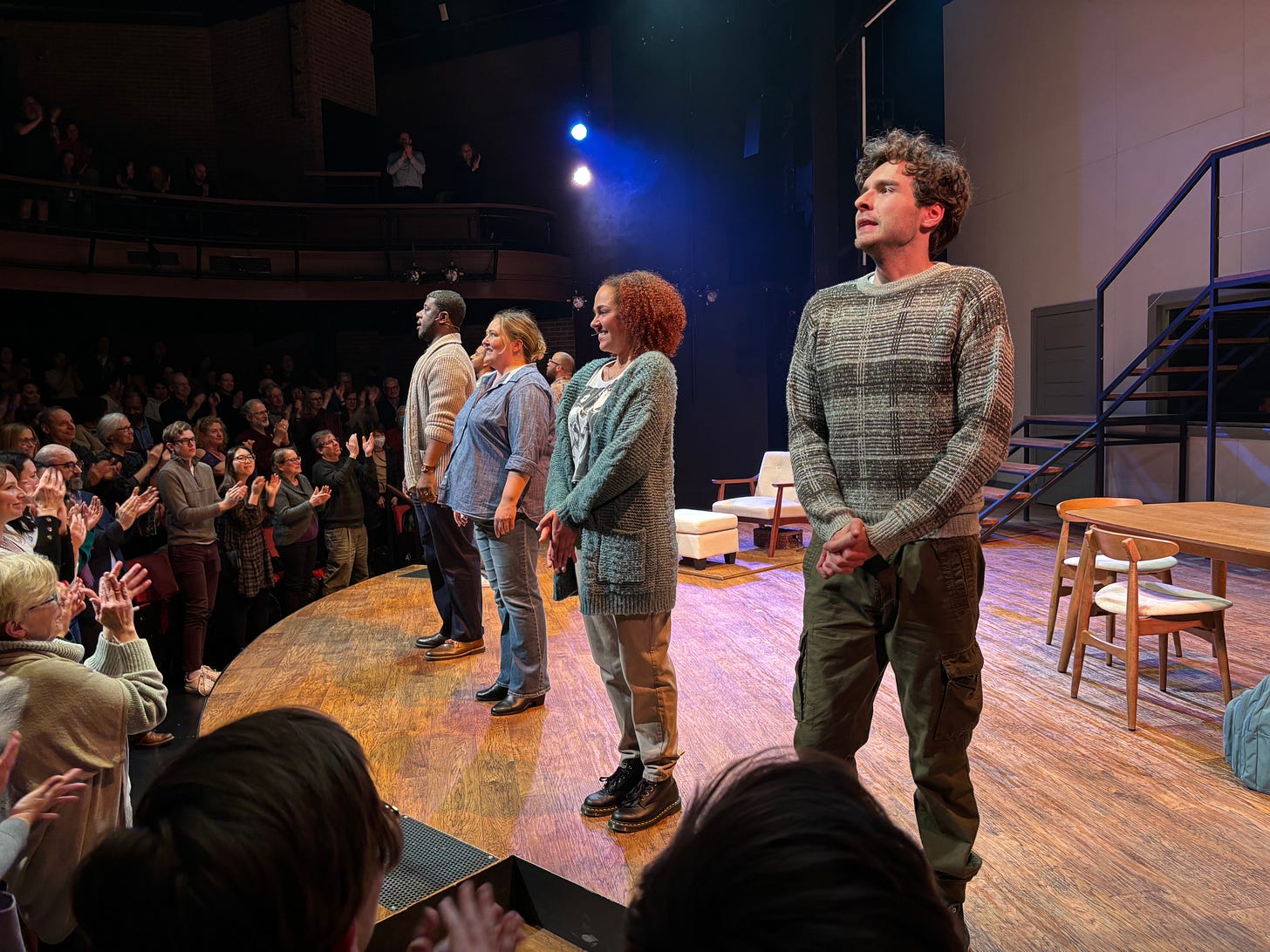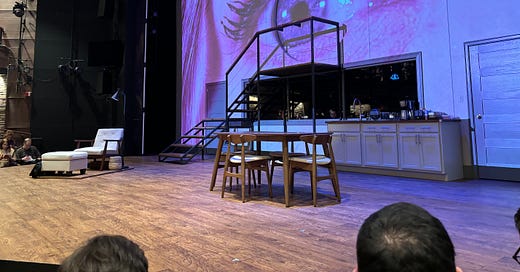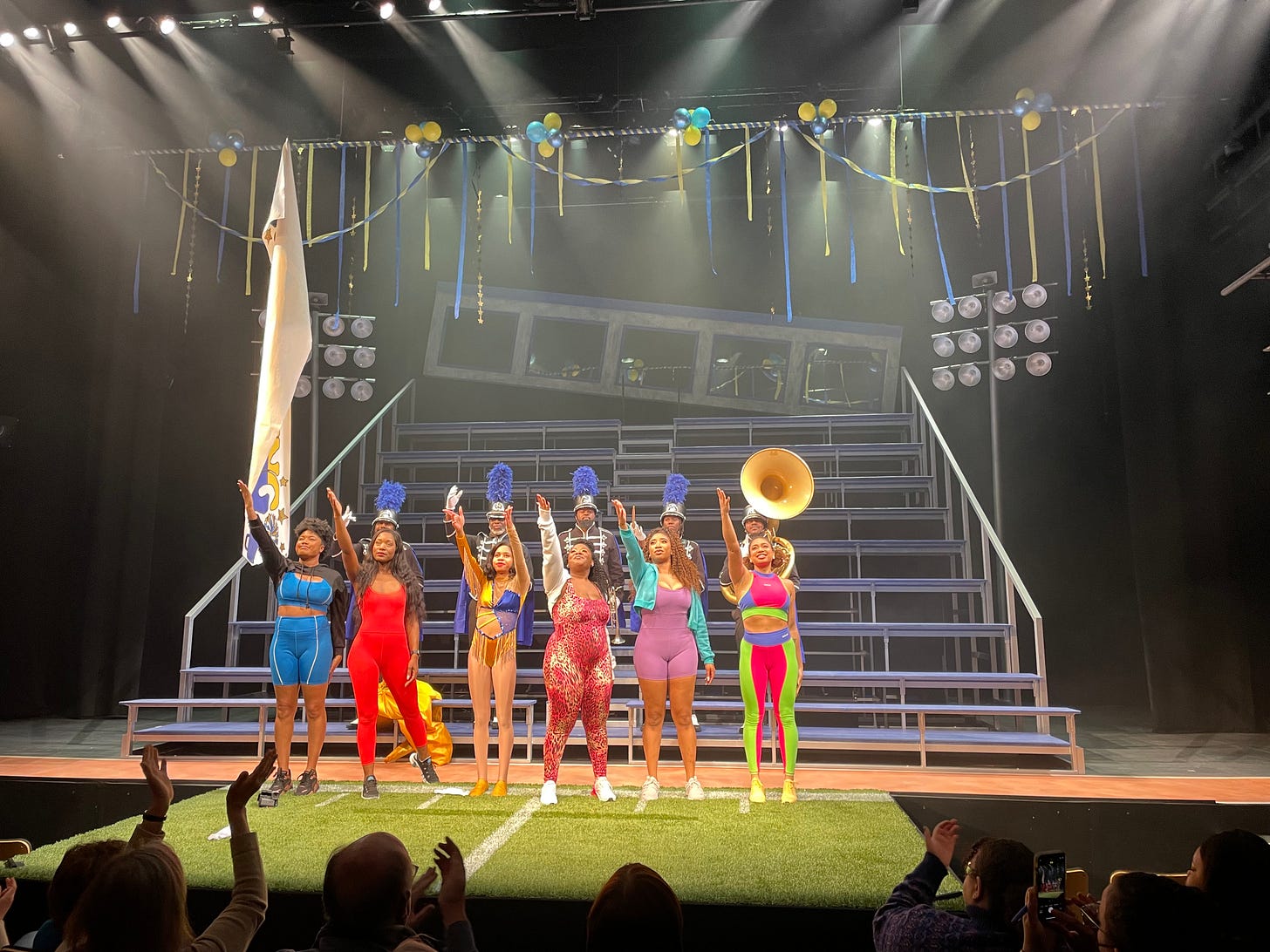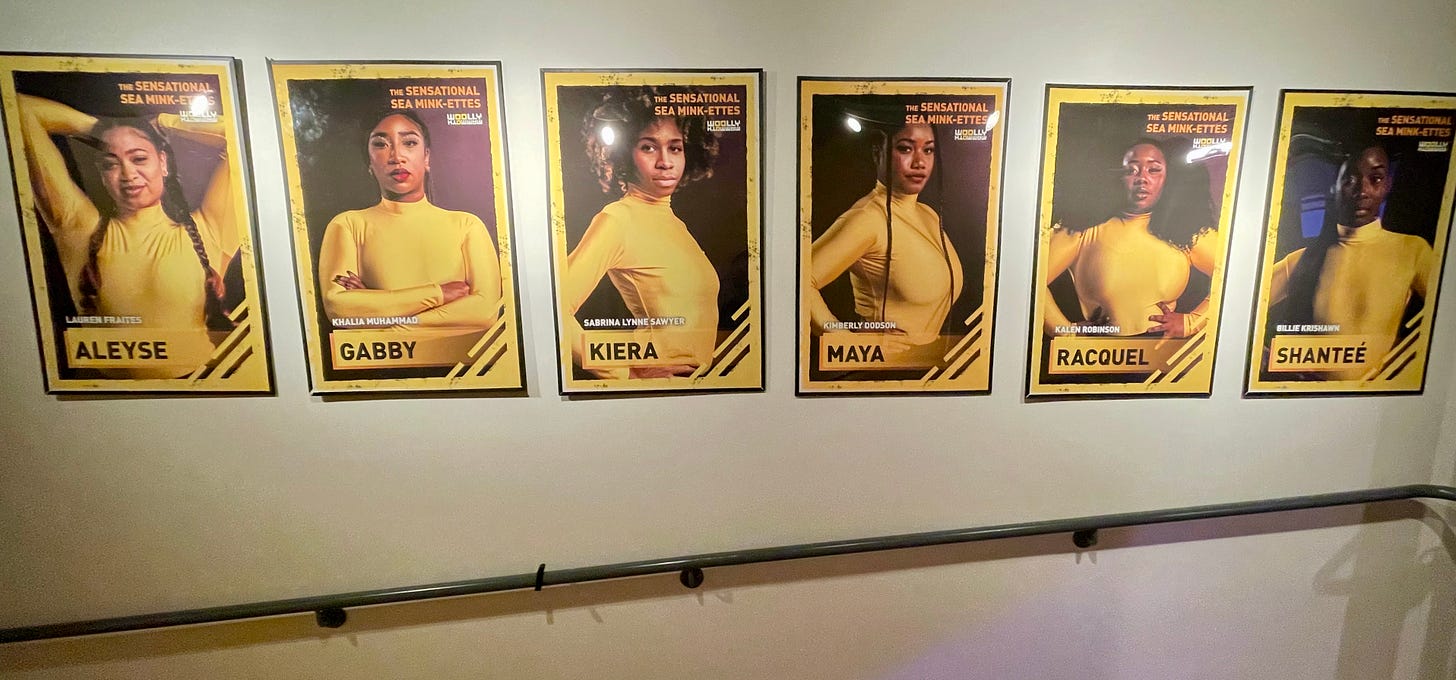DC Reviews: An excellent revival of the family mental illness drama "Next to Normal"
...plus a flawed but engaging world premiere, "The Sensational Sea Mink-Ettes"
Hello play-goers! I’m back with reviews of two shows playing right now in DC.
Review: A vivid, moving portrayal of mental illness in “Next to Normal”
The strains of mental illness on an entire family form the core of “Next to Normal,” on stage in a superb production at Round House Theatre. This Pulitzer Prize-winning musical premiered in 2008, with a pre-Broadway run at Arena Stage here in Washington. I saw that production and remember being totally wowed. This revival is worthy of the excellent material.
Diana Goodman is a middle-aged wife and mother struggling with bipolar disorder. The musical charts her journey through various treatments—medication, psychotherapy, and electroconvulsive therapy—while simultaneously showing the impact of her illness on her husband and daughter, Natalie. Rounding out the cast is Diana’s son, her psychotherapist, and Natalie’s boyfriend. The whole ensemble was fantastic and sang the rock-inflected score beautifully and ferociously. While the show offers insight into how mental illness is treated, what makes it compelling is the tight focus on the impact of Diana’s illness on the family. This keeps the show firmly planted in flesh-and-blood characters.

Increasing visibility of mental illness and the imperfect treatments available was important when the show premiered 16 years ago. It feels even more urgent now as so many people—especially youth—are dealing with mental health challenges.
Tom Kitt’s propulsive music and Brian Yorkey’s lyrics and book capture the wide range of emotions the characters in the show go through. Most songs manage to weave together multiple characters’ storylines, with creative uses of reprises and musical motifs to achieve this effect.
Particularly moving is the journey Diana’s husband (an excellent Kevin S. McAllister) takes, from stalwart caretaker to confronting his own trauma and mental health. By the end, it’s clear he’s been using support role to avoid his own issues. Similarly, Natalie receives a lot of the collateral damage from her mother’s illness. Besides the emotional toll of being ignored in favor of Diana’s acute challenges, there’s a physical one once she begins taking her mother’s medications. Sophia Early’s finely drawn portrayal captured all the anger and anxieties Natalie experiences.
As Diana, the excellent Tracy Lynn Olivera really embodied the vacant looks and fear of someone not in control of their mind. Her understated approach and killer vocals (as good as Alice Ripley on the great Broadway cast recording) brought the character to vivid life.

The direction, by Alan Paul missed a few beats in the first act—a big reveal moment fell flat and a few scenes lacked physicality and movement. But by the Act 2 opener—the banger “Wish I Were Here,” depicting Diana’s electroconvulsive therapy—it had found its way.
A spare set from designer Wilson Chin provided good contrast to the messiness of Diana’s mind and relationships, while Sherrice Mojgani’s constantly changing lighting fit well with the rock score and all the ups and downs Diana goes through. The projection design by Nicholas Hussong was sometimes distracting or gratuitous, but when it worked it was great at showing Diana’s delusions and what was going on in her brain. In the song “Catch Me I’m Falling,” the projections showed live video of a character lying on a table from above, resembling someone falling backwards.
“Next to Normal” is a prime example of the opportunities of theatre and storytelling craft at its best. (Note: Spoilers ahead.) Diana’s son, Gabe, died in infancy; this is the original trauma that sets off her bipolar disorder. On stage, he is portrayed (by Lucas Hinds Babcock) at the age he would be if he had lived; essentially, he exists only in Diana’s mind. This embodiment of her delusion personifies her mental illness. When she is struggling with decisions about treatment, Gabe pushes back: “Catch me, I’m falling,” he sings, begging her not to let go of her grief over his death, and therefore to stay sick. This conceit is brilliant and makes many moments of the show much more poignant and powerful.
As the play concludes and the family faces an uncertain future, this production raised a new question for me: Are we too afraid of pain and struggle, overmedicating our mental health challenges or scrolling mindlessly to distract ourselves from any moment of sadness? As the characters sing in the finale, “Give me pain, if that’s what’s real / it’s the price we pay to feel.”
Playing at Round House Theatre in Bethesda, MD through March 3.
Review: Captivating but strange, “The Sensational Sea Mink-Ettes” raises more questions than it answers
“The Sensational Sea Mink-Ettes,” a world premiere at the boundary-pushing Woolly Mammoth Theatre, directed by Taylor Reynolds, is a compelling drama wrapped in a confusing and underdeveloped mystery. It held my attention even as it opened more threads than it could resolve.
The characters are all young Black women studying at an unnamed HBCU. They are members of a dance team, the Sea Mink-Ettes, preparing for a big homecoming show. They are all striving for excellence while struggling with personal issues: coping with eating disorders, writing a great thesis, fitting in on the team, making their parents proud, trying to be a leader. The scenes that explored these personal dramas were gripping and funny. In one hilarious bit early on, the characters discuss a rogue pubic hair on an offstage character’s upper thigh.
Put together, the characters all seem to be dealing with the pressures associated with Black Excellence. They have to be beautiful, fit into a certain body type, dance perfectly, and do well academically. The team’s leader, Shanteé (a strong Billie Krishawn) struggles with her own authority and an eating disorder. The “new girl,” Aleyse, (a sweetly naive and earnest Lauren Fraites) just wants to make her Mink-Ette alumnae mother and grandmother proud. Maya (lent a complex interiority by actress Kimberly Dodson) is struggling to finish her thesis and feeling ignored by her advisor while also battling an eating disorder. And Kiera (an excellent Sabrina Lynne Sawyer) processes her mental health struggles by imaging herself as Beyoncé.
These storylines are rich enough to construct a great play. But the playwright, the clearly gifted Vivian J.O. Barnes, seems interested in raising bigger questions. The women are driven by the pursuit of visibility: “We will make them see us—we will be undeniable,” Shanteé repeated several times, referring to their performance at homecoming. But who exactly do they want to see them? Is this a racial or gender commentary? Or about gaining self-worth coming from one’s body being noticed? Definitive answers are not a requirement of great theatre, but more development would have made these explorations more satisfying.
And then weird stuff starts happening: the stadium lights start to flicker; the bleachers begin to break; the electricity cuts out; and people they know stop recognizing them on campus. What are we to make of these mysterious elements? At first, they create intrigue, putting the viewer at the edge of her seat. But ultimately, too little of these mysteries were resolved to provide for a satisfying conclusion. Among the group I attended with, the main feeling at the end was confusion. These are solvable problems and with some refining and restructuring, the play could really soar. That’s what’s so exciting about seeing brand new work: it’s just the first take on the material, and how we react as an audience gives the theatre-makers information they can use to build upon and improve it.
A highlight of the production is the dances the team puts together (choreography is by Ashleigh King). Besides being fabulous, they helped advance character and plot, as Shanteé corrected her Mink-Ettes’ movements.
The set design by Paige Hathaway filled the volume of the stage with bleachers, lights, and a very real-looking field. Minjoo Kim’s lighting design was more mixed. While achieving the realism of a field at night, other scenes were too darkly lit to make the characters visible to the audience. Danielle Preston’s costumes helped focus us on the young womens’ bodies, key for exploring the body image and eating disorders that were a central theme. I’ve never seen so much athletic wear on stage!
In spite of its flaws, I exited the theater energized by the creativity in the storytelling and the insight into an experience I knew little about. The pressure the young women put on themselves—mostly to deliver a stunning performance at homecoming, but also to handle all the challenges thrown their way—made for great drama.
Playing at Woolly Mammoth Theatre in DC through March 3.





